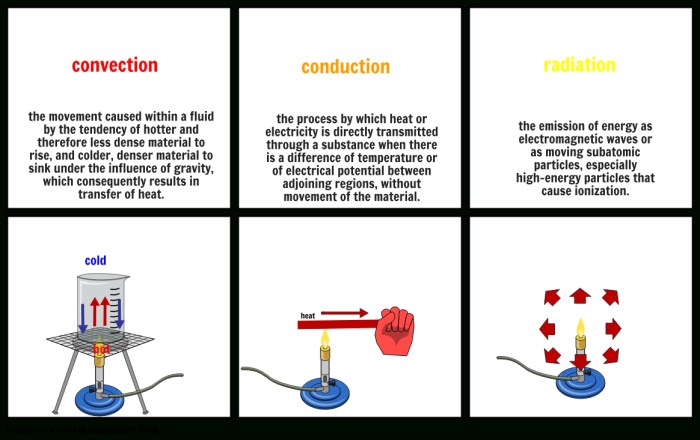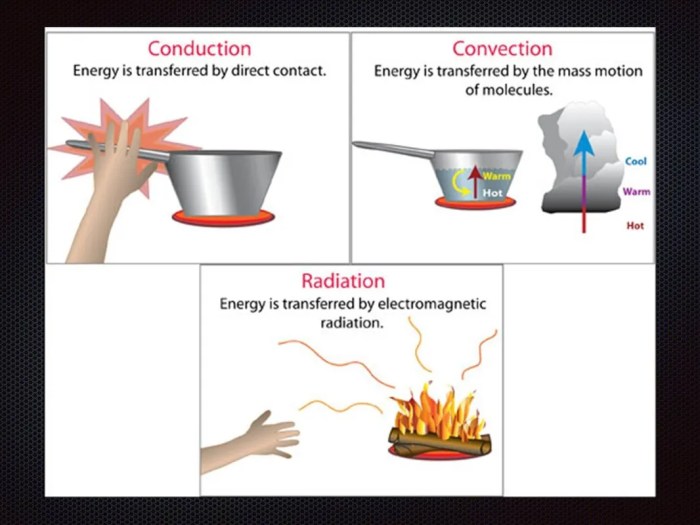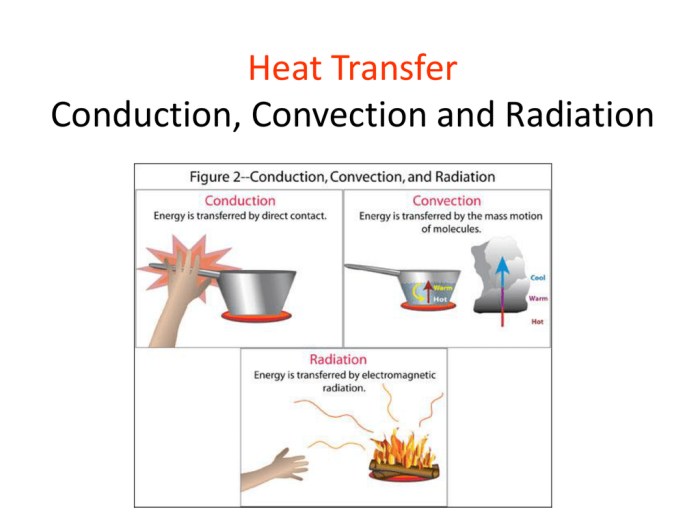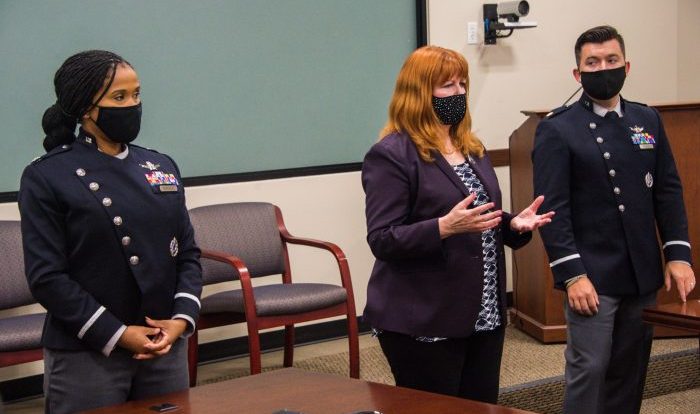Conduction convection radiation worksheet with answers – Welcome to the fascinating world of heat transfer! In this comprehensive worksheet, we embark on an in-depth exploration of three fundamental mechanisms of heat transfer: conduction, convection, and radiation. Through engaging questions and insightful answers, we will unravel the complexities of these processes and their applications in various fields.
As we delve into the realm of conduction, we will investigate how heat flows through solid materials. We will explore the factors that influence the rate of heat transfer and encounter real-world examples that demonstrate the practical applications of conduction.
Next, we will turn our attention to convection, the process of heat transfer through the movement of fluids. We will uncover the mechanisms that drive convection currents and discuss the role of buoyancy in this process.
Conduction, Convection, and Radiation

Heat transfer occurs in three ways: conduction, convection, and radiation. These processes are responsible for the transfer of thermal energy from one object or region to another.
Conduction
Conduction is the transfer of thermal energy between two objects in contact with each other. When two objects are in contact, the molecules in the hotter object vibrate more rapidly than the molecules in the cooler object. These vibrations are transferred from one molecule to another, causing the cooler object to warm up and the hotter object to cool down.
- Examples of conduction include the transfer of heat from a hot stove to a pot, from a warm hand to a cold surface, or from the sun to the ground.
- Factors that affect conduction include the temperature difference between the two objects, the surface area of contact, and the material of the objects.
Convection
Convection is the transfer of thermal energy by the movement of a fluid. When a fluid is heated, it expands and becomes less dense. This less dense fluid rises, while the cooler, denser fluid sinks. This creates a convection current, which transfers heat from the hotter part of the fluid to the cooler part.
- Examples of convection include the transfer of heat in a pot of boiling water, the circulation of air in a room, or the movement of ocean currents.
- Factors that affect convection include the temperature difference between the two parts of the fluid, the density of the fluid, and the viscosity of the fluid.
Radiation, Conduction convection radiation worksheet with answers
Radiation is the transfer of thermal energy through electromagnetic waves. Electromagnetic waves are produced by the vibration of charged particles, and they can travel through space without the need for a medium. When electromagnetic waves strike an object, they can be absorbed, reflected, or transmitted.
If they are absorbed, they can transfer their energy to the object, causing it to warm up.
- Examples of radiation include the transfer of heat from the sun to the earth, the emission of heat from a hot object, or the transmission of heat through a window.
- Factors that affect radiation include the temperature of the object, the wavelength of the electromagnetic waves, and the distance between the object and the receiver.
FAQs: Conduction Convection Radiation Worksheet With Answers
What is the difference between conduction, convection, and radiation?
Conduction is the transfer of heat through direct contact between objects, convection is the transfer of heat through the movement of fluids, and radiation is the transfer of heat through electromagnetic waves.
What are some examples of conduction?
Cooking food in a pan, ironing clothes, and melting ice are all examples of conduction.
What are some examples of convection?
Boiling water, air conditioning, and ocean currents are all examples of convection.
What are some examples of radiation?
Sunlight, heat from a fire, and microwaves are all examples of radiation.


